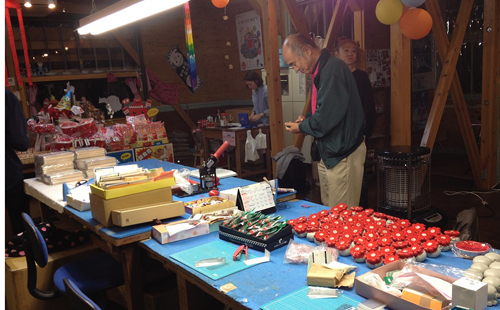Written by:
The power of activity and enterprise
Following the tsunami, one of the biggest challenges for local people, particularly those whose workplace had been destroyed, was that they had lost their daily routine based on having somewhere to go and something to do. Shops and businesses were simply swept away and while there was no end of work to do in cleaning up the debris, the scale and complexity of the operation, and the emotional strain of such work only exasperated the sense of the every day being lost.
A local civil servant, Tadayoshi Abe tasked with supporting local enterprise and business, came up with an ingenious idea. Using an empty building, formally a school building, on high ground, he set up the Yes Workshop. Initially, this was simply a space where people could go to craft objects. The idea was simple, it was a warm, dry space away from the shelters and temporary accommodation, where people could sit side by side and create. For some, it was a space for conversation, for others it was a space to enjoy the company of others without the need to talk. The simple act of making objects, in the company of others, and the space to do so, had a therapeutic value, for both individuals and the community.
The Yes Workshop did much more than this. They created a brand and mascot, Octopus-Kun, based on local identity and culture and on local food production. The red octopus figure became not only a brand, but a symbol of home. Those who went to the Yes Workshop crafted clay paperweights, which were painted bright red. People began to give the paperweights to friends and family as a talisman for good luck, particularly to students about to take exams. These red octopus objects are now sold throughout Japan, as a symbol of resilience, hope and good fortune.

The Yes Workshop set itself up as a social enterprise, generating funds to support local families and the rebuilding of Minamisanriku. They now have a range of products which they produce at their workshop and sell all over the country. This innovative social enterprise has moved from using traditional craft techniques to a wider spectrum of craftsmanship, and is training local people in new technologies such as 3D printing.
The mascot, Octopus-Kun, has also become a bit of a cult figure. The workshop sends a life-size version of Octopus-Kun out to visit schools, fire stations, shops, as a way of rallying support, but also as a way of celebrating the resilience of local people.
What began as a sort of community space, has now become a thriving social enterprise. Yet it has managed to maintain the qualities of a space created for people to come together, to socialise, to collaborate, to learn and to celebrate local products.
You can read the full collection of stories in this series in the publication Lessons from Minamisanriku: Stories of resilience and rebuilding.

Funded by the Arts and Humanities Research Council, ‘Bridging the Gap between Academic Theory and Community Relevance: Fresh Insights from American Pragmatism’ (AH/K006185/1) was a collaborative research project involving Keele University, Brunel University, the Open University, University of Edinburgh and Seinan Gakuin University (Japan), and community partners New Vic Borderlines and The Glass-House Community Led Design.

